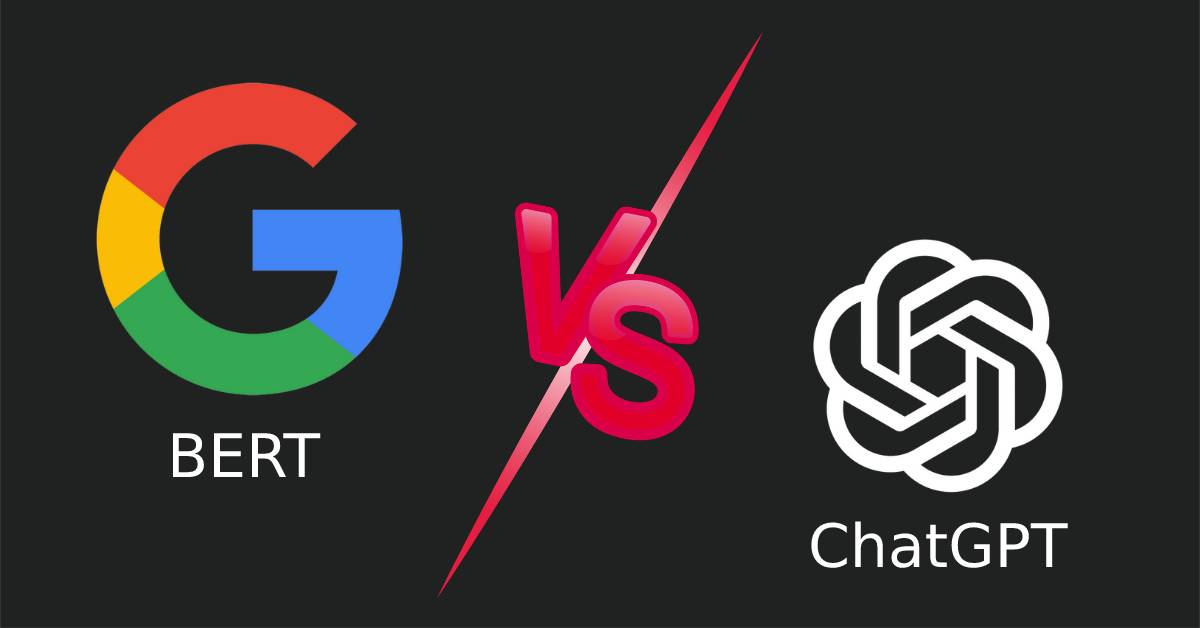Chat GPT VS Google BERT
Natural language processing (NLP) has made great strides in recent years. With the advent of sophisticated new models like as Chat GPT and BERT, it is now possible to construct apps that can comprehend and interact with human language.
But, what went viral as a disruptive chatbot with ChatGPT quickly transformed into a language model competition to power AI content. So, we choose to compare ChatGPT and BERT in order to comprehend their differences and similarities, investigate their capabilities, and describe some of the tools that employ them.
What exactly is ChatGPT?
OpenAI created the Chat GPT-3 or GPT3 (Generative Pretrained Transformer 3) autoregressive language model. It was trained using a 45TB corpus of text data from sources like Wikipedia, books, and websites. The program is able to generate text that resembles human language when given a command. In addition, it can be utilized for activities like as question answering, summarization, and translation, among others.
Examples of ChatGPT-based AI-writing applications
GPT-3 is now employed by a number of AI content writing tools, including:
- Jasper 2.
- ChibiAI
- WriteSonic
- Simplified
- Kafkai
- Copysmith
What is the BERT acronym?
Google AI developed the BERT (Bidirectional Encoder Representations from Transformers) language model. BERT, unlike GPT-3, is a bidirectional transformer model that takes left and right context into account while producing predictions. This makes it more suitable for sentiment analysis and NLU (natural language understanding) applications.
BERT usage cases
BERT is the hub for a variety of services, including:
Huggingface Search Engine Google Transformer Collection
Cognitive Microsoft Azure Services
Google Natural Language API
Distinctions between ChatGPT and BERT
Their architecture is the most notable distinction between GPT-3 and BERT. As stated previously, GPT-3 is an autoregressive model whereas BERT is bidirectional. BERT takes both the left and right context into account when formulating predictions, whereas GPT-3 just examines the left context. This makes BERT more suitable for applications such as sentiment analysis and natural language understanding, where comprehending the entire sentence or phrase context is vital.
The training datasets utilized by the two models are another distinction between them. While both models were trained on large text datasets from sources such as Wikipedia and novels, GPT-3 was trained on 45TB of data whilst BERT was trained on 3TB of data. So, GPT-3 has access to more data than BERT, which could offer it an advantage in certain tasks, such as summarization and translation, where more data can be advantageous.
Moreover, there are variations in terms of size. While both models are quite huge (GPT-3 has 1.5 billion parameters and BERT has 340 million), GPT-3 is much larger than its predecessor due to its much greater training dataset size (470 times bigger than the one used to train BERT).
Comparable features of Chat GPT and BERT
Despite their differences in architecture and training dataset size, GPT-3 and BERT share several similarities:
Using attention processes, they apply the Transformer architecture to learn context from text-based datasets.
These are unsupervised learning models (whose training does not require labeled data).
Depending on the goal, they may execute various NLP tasks such as question answering, summarization, and translation with varied degrees of accuracy.
ChatGPT vs. BERT: capability comparison
It has been demonstrated that both GPT-3 and BERT perform well on a variety of NLP tasks, such as question answering, summarization, and translation, with varied degrees of accuracy depending on the job at hand.
GPT-3 outperforms its predecessor in certain tasks, like as summarization and translation, where having access to more data is advantageous.
BERT tends to do better on other tasks, such as sentiment analysis or NLU, due to its bidirectional nature, which allows it to consider both left and right context while making predictions. When predicting words or phrases within a sentence, GPT -3 only analyzes the left context.
Conclusion
GPT-3 and BERT have shown to be helpful tools for executing a variety of NLP tasks with differing degrees of precision. Yet, given to their distinct architectures and training dataset sizes, each model is better suited for specific tasks than others. GPT-3 is more suitable for summarization or translation, whilst BERT is more advantageous for sentiment analysis or NLU. The choice between the two models will ultimately depend on your individual requirements and the work you wish to achieve.







